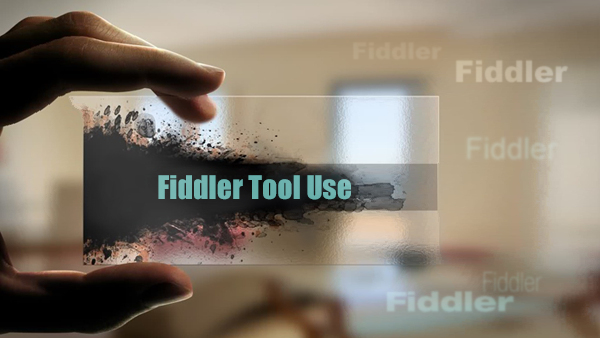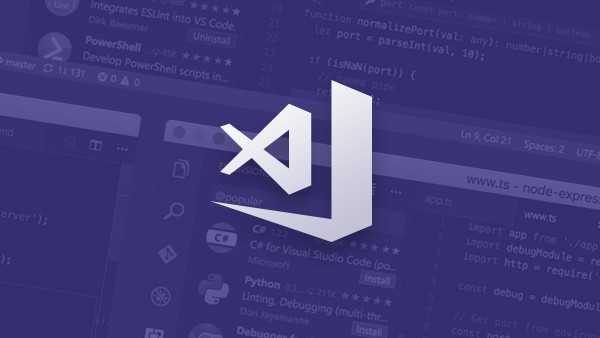本文介绍了Vue3公共组件的概念、优势和创建方法,并详细讲解了如何选择合适的公共组件、常见公共组件案例以及如何优化公共组件的性能和维护性。文章还提供了实践项目和进一步学习资源,帮助读者深入了解和应用Vue3公共组件资料。
Vue3公共组件简介
什么是公共组件
公共组件是Vue3项目中可以被多个页面或组件复用的部分。这些组件通常提供一些通用的功能,如按钮、导航栏、搜索框等。通过封装这些功能,开发者可以提高代码的复用性和维护性。公共组件通常被放在一个单独的文件夹中,以便在整个项目中统一管理。
公共组件的优势
公共组件的主要优势包括:
- 提高代码复用性:公共组件可以被多个页面或组件复用,避免了代码的重复编写。
- 降低维护成本:由于公共组件集中管理,修改一处即可影响所有使用该组件的地方。
- 增强一致性:公共组件保证了项目中的某些UI元素的一致性,如按钮样式。
- 节省开发时间:使用已有的公共组件减少了开发时间,可以更快地完成项目的其他部分。
如何选择合适的公共组件
选择合适的公共组件需要考虑以下几个因素:
- 功能性:组件应解决实际问题,提供明确的功能。
- 通用性:组件应适用于尽可能多的场景。
- 可维护性:组件应易于维护和升级。
- 易用性:组件应简单易用,有良好的文档和示例。
- 可扩展性:组件应易于扩展,以便在将来添加更多功能。
常见公共组件案例分析
按钮组件
按钮组件是一个常见的公共组件,通常用于触发某个操作,如提交表单、导航到其他页面等。下面是一个简单的按钮组件示例:
<template>
<button :class="buttonClass" @click="handleClick">
{{ label }}
</button>
</template>
<script setup>
import { defineProps, computed } from 'vue';
const props = defineProps({
label: {
type: String,
default: 'Button',
},
type: {
type: String,
default: 'primary',
},
onClick: {
type: Function,
default: () => {},
},
});
const buttonClass = computed(() => {
return `btn ${props.type}`;
});
const handleClick = () => {
props.onClick();
};
</script>
<style scoped>
.btn {
padding: 10px 20px;
border: none;
border-radius: 5px;
cursor: pointer;
}
.primary {
background-color: #007bff;
color: white;
}
.secondary {
background-color: #6c757d;
color: white;
}
</style>该组件接受三个属性:label、type 和 onClick。label 用于设置按钮的文本,type 用于设置按钮的样式,onClick 用于设置点击按钮时触发的回调函数。
路由导航组件
路由导航组件用于在多个页面之间导航。下面是一个简单的路由导航组件示例:
<template>
<nav>
<ul>
<li v-for="route in routes" :key="route.name">
<router-link :to="{ name: route.name }">
{{ route.label }}
</router-link>
</li>
</ul>
</nav>
</template>
<script setup>
import { defineProps } from 'vue';
const props = defineProps({
routes: {
type: Array,
default: () => [],
},
});
</script>
<style scoped>
nav ul {
list-style-type: none;
padding: 0;
}
nav li {
display: inline;
margin-right: 10px;
}
nav a {
text-decoration: none;
color: #333;
}
nav a:hover {
text-decoration: underline;
}
</style>该组件接受一个 routes 数组作为属性,数组中的每个元素包含路由的 name 和 label。
搜索框组件
搜索框组件用于提供搜索功能。下面是一个简单的搜索框组件示例:
<template>
<form @submit.prevent="handleSearch">
<input v-model="searchQuery" type="text" placeholder="Search..." />
<button type="submit">Search</button>
</form>
</template>
<script setup>
import { ref } from 'vue';
const searchQuery = ref('');
const handleSearch = () => {
// 处理搜索逻辑
console.log('Search query:', searchQuery.value);
};
</script>
<style scoped>
form {
display: flex;
align-items: center;
}
input {
padding: 10px;
margin-right: 10px;
border: 1px solid #ccc;
border-radius: 5px;
}
button {
padding: 10px 20px;
border: none;
border-radius: 5px;
background-color: #007bff;
color: white;
cursor: pointer;
}
button:hover {
background-color: #0056b3;
}
</style>该组件使用 v-model 绑定输入框的值,并在提交表单时触发搜索逻辑。
创建自己的公共组件
定义组件结构
在项目结构中,通常将公共组件放在一个单独的文件夹中,例如 components/。每个组件都包含一个 .vue 文件,文件内容包括模板、脚本和样式。
下面是一个简单的公共组件模板:
<template>
<!-- 组件模板代码 -->
</template>
<script setup>
import { defineProps, ref, computed } from 'vue';
const props = defineProps({
// 组件属性
});
const internalState = ref(initialState);
const internalComputed = computed(() => {
// 计算属性代码
});
const internalMethods = () => {
// 方法代码
};
</script>
<style scoped>
/* 组件样式代码 */
</style>编写组件逻辑
在组件的 <script setup> 部分,可以使用 defineProps 定义组件的属性,使用 ref 和 computed 定义组件的状态和计算属性,使用 methods 定义组件的方法。
下面是一个示例:
<template>
<div>
<p>{{ message }}</p>
<button @click="increment">Increment</button>
</div>
</template>
<script setup>
import { defineProps, ref } from 'vue';
const props = defineProps({
message: {
type: String,
default: 'Hello',
},
});
const count = ref(0);
const increment = () => {
count.value++;
};
</script>
<style scoped>
div {
background-color: #eee;
padding: 10px;
border-radius: 5px;
}
</style>导入与导出组件
在项目中使用刚刚创建的公共组件时,需要先将组件导出,然后在需要的地方导入并使用。
下面是在组件文件中导出组件的示例:
<template>
<div>
<p>{{ message }}</p>
<button @click="increment">Increment</button>
</div>
</template>
<script setup>
import { defineProps, ref } from 'vue';
const props = defineProps({
message: {
type: String,
default: 'Hello',
},
});
const count = ref(0);
const increment = () => {
count.value++;
};
</script>
<style scoped>
div {
background-color: #eee;
padding: 10px;
border-radius: 5px;
}
</style>在其他组件中导入并使用该组件:
<template>
<div>
<h1>Welcome</h1>
<Counter message="Count here" />
</div>
</template>
<script setup>
import Counter from './Counter.vue';
</script>
<style scoped>
div {
display: flex;
flex-direction: column;
align-items: center;
}
</style>在项目中使用公共组件
引入公共组件库
在项目中使用公共组件库,可以通过以下步骤引入:
-
安装组件库(如
element-plus):npm install element-plus - 在项目中引入并使用组件库中的组件,例如
<el-button>:
<template>
<div>
<el-button type="primary">Primary Button</el-button>
<el-button type="success">Success Button</el-button>
</div>
</template>
<script setup>
import { ElButton } from 'element-plus';
</script>
<style scoped>
div {
display: flex;
gap: 10px;
align-items: center;
}
</style>在组件中使用公共组件
在组件中使用公共组件通常包括在模板中声明组件和在 <script setup> 中导入组件。
下面是一个示例:
<template>
<div>
<Counter message="Count here" />
</div>
</template>
<script setup>
import Counter from './Counter.vue';
</script>
<style scoped>
div {
display: flex;
flex-direction: column;
align-items: center;
}
</style>自定义公共组件属性和事件
自定义公共组件属性和事件可以通过 defineProps 和 defineEmits 来实现。
下面是一个示例:
<template>
<div>
<p>{{ message }}</p>
<button @click="increment">Increment</button>
</div>
</template>
<script setup>
import { defineProps, defineEmits, ref } from 'vue';
const props = defineProps({
message: {
type: String,
default: 'Hello',
},
});
const emit = defineEmits(['incremented']);
const count = ref(0);
const increment = () => {
count.value++;
emit('incremented', count.value);
};
</script>
<style scoped>
div {
background-color: #eee;
padding: 10px;
border-radius: 5px;
}
</style>在其他组件中使用并监听事件:
<template>
<div>
<h1>Welcome</h1>
<Counter message="Count here" @incremented="handleIncrement" />
</div>
</template>
<script setup>
import Counter from './Counter.vue';
const handleIncrement = (newCount) => {
console.log('Counter incremented:', newCount);
};
</script>
<style scoped>
div {
display: flex;
flex-direction: column;
align-items: center;
}
</style>Vue3公共组件优化
性能优化技巧
公共组件的性能优化主要涉及减少不必要的重新渲染和优化组件的响应性。以下是一些常用的优化技巧:
- 优化组件状态:尽量减少组件状态的更新频率,避免不必要的重新渲染。
- 使用
v-once指令:对于不需要动态更新的内容,使用v-once指令避免重新渲染。 - 减少不必要的计算属性:计算属性会根据依赖的响应式数据重新计算,尽量减少依赖项。
- 组件缓存:对于不频繁更新的组件,可以使用组件缓存功能减少重新渲染。
下面是一个示例:
<template>
<div v-if="show" v-once>
<p>This content is cached and won't re-render.</p>
</div>
</template>
<script setup>
import { ref } from 'vue';
const show = ref(true);
</script>
<style scoped>
div {
background-color: #eee;
padding: 10px;
border-radius: 5px;
}
</style>代码复用与维护
代码复用和维护是公共组件的核心目标。以下是一些建议:
- 模块化和封装:将公共组件封装为独立的模块,避免代码混乱。
- 清晰的文档:为每个公共组件编写清晰的文档,说明其功能、使用方法和注意事项。
- 测试:编写单元测试,确保公共组件的功能正确且稳定。
- 版本管理:使用版本控制工具(如Git)管理公共组件的版本,便于回溯和升级。
下面是一个示例:
<template>
<div>
<p>{{ message }}</p>
<button @click="increment">Increment</button>
</div>
</template>
<script setup>
import { defineProps, defineEmits, ref } from 'vue';
const props = defineProps({
message: {
type: String,
default: 'Hello',
},
});
const emit = defineEmits(['incremented']);
const count = ref(0);
const increment = () => {
count.value++;
emit('incremented', count.value);
};
</script>
<style scoped>
div {
background-color: #eee;
padding: 10px;
border-radius: 5px;
}
</style>测试公共组件
测试公共组件可以确保组件的正确性和稳定性。以下是一些常用的测试方法:
- 单元测试:使用单元测试框架(如
Jest或Vue Test Utils)对组件进行单元测试。 - 集成测试:测试组件在实际应用中的表现,确保组件与其他组件协同工作的正确性。
- 端到端测试:使用端到端测试工具(如
Cypress)测试整个应用的交互流程。
下面是一个单元测试示例:
import { shallowMount } from '@vue/test-utils';
import Counter from '@/components/Counter.vue';
describe('Counter.vue', () => {
it('increments count when button is clicked', () => {
const wrapper = shallowMount(Counter);
expect(wrapper.text()).toContain('Hello');
wrapper.find('button').trigger('click');
expect(wrapper.text()).toContain('Hello');
expect(wrapper.emitted('incremented')).toBeTruthy();
expect(wrapper.emitted('incremented')).toHaveLength(1);
});
});总结与实践指南
本章知识回顾
本章介绍了Vue3公共组件的概念、优势、创建和使用方法,以及如何优化公共组件的性能和维护性。公共组件是Vue3项目中重要的组成部分,可以提高代码的复用性和维护性。通过模块化和封装、清晰的文档和测试,可以确保公共组件的功能正确且稳定。
实践项目推荐
推荐以下实践项目来加深对公共组件的理解:
- 创建一个公共组件库:选择一些常用的组件(如按钮、导航、搜索框等),将它们封装成公共组件,并在项目中使用。
- 优化现有组件:选择一个现有组件,分析其性能瓶颈,并进行优化。
- 编写测试用例:为一个公共组件编写单元测试和集成测试,确保其功能正确性。
进一步学习资源
- 慕课网:提供丰富的Vue3教程和实战项目,适合初学者和进阶开发者。
- 官方文档:Vue3官方文档提供了详细的API和示例,是学习Vue3的重要资源。
- 在线社区:参与Vue3相关的在线社区(如论坛和GitHub),可以与其他开发者交流经验和问题。

 随时随地看视频
随时随地看视频




